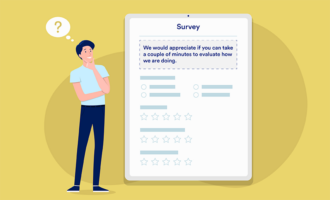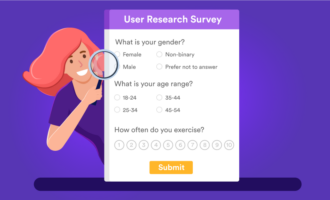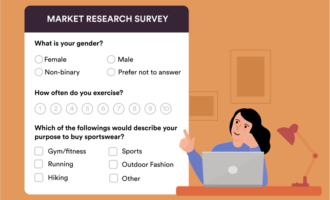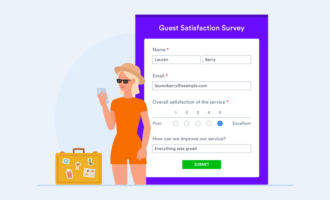Do you want to know what your audience is thinking? Of course you do. Surveys and questionnaires can help you get to know your audience. When used correctly, both surveys and questionnaires gather valuable customer insights. But what’s the difference between the two tools?
Let’s look at the definitions first. A questionnaire is a list of questions used to collect data, usually for a specific purpose. Questionnaires are simple and single-minded. A survey is usually made up of a series of questions or questionnaires. The difference is that surveys are designed for statistical analysis and comparison to understand trends in opinion and behavior.
In this article, we’ll discuss why surveys and questionnaires are useful and look at the advantages and disadvantages of each.
Questionnaires help you obtain sensitive information
Questionnaires are useful and versatile. They are used in all types of situations from big businesses trying to learn about their customers to healthcare organizations that want to provide better service to their patients. Even fields as complex as psychiatry have formulated well-tested questionnaires to diagnose depression.
So why should you use a questionnaire? Here are three good reasons:
- Scalability. Because questionnaires can be digital, it’s easy to distribute them electronically.
- Flexibility. Questionnaires can be used for almost any data-gathering initiative — from something as simple as learning about a customer’s last visit to something as complicated as a health questionnaire.
- Sensitivity. Respondents may feel more comfortable answering sensitive questions via questionnaire as opposed to face to face. This can be especially helpful for healthcare professionals who need sensitive information to do their job.
The simplicity and flexibility of questionnaires make them a great tool, but they’re not always the best solution. Let’s consider a few of the disadvantages of questionnaires.
Disadvantages of questionnaires
The first disadvantage of questionnaires is human error. Respondents may not understand the questions or the technology you’re using to distribute the questionnaire. This could lead to incorrect answers that render the information you collect useless.
Another downside to questionnaires is fatigue. Sometimes you get too many requests to take surveys and questionnaires, and you feel overloaded. This makes most people unwilling to participate.
What can you do to counteract this tendency? Keep your questionnaires as simple as possible. If they are too long or too complicated, you can lose both your participants’ attention and interest. The responses they give are likely to be rushed and inaccurate.
The simplicity of questionnaires makes them easy to use, but it also limits their scope. Let’s look at another tool you can use when a questionnaire isn’t enough.
Surveys help you understand consumer trends
Good surveys have a clear purpose, are easy to administer, and are easy to complete. They also produce accurate data that helps you confidently make informed decisions. Successful companies, like Walmart, use them to help cater to their consumers.
In addition to being easy to administer, surveys benefit companies in three main ways:
- Cost. Like questionnaires, surveys are a cost-effective way to collect the data you need. Administering a survey is much cheaper than using methods that use a lot of company resources, like in-person meetings or phone interviews.
- Trends. Surveys are great tools for gathering statistical data to understand consumer trends. This can help organizations make informed decisions regarding future products and services, among other things.
- Design. Good surveys are intentionally designed. This can encourage participation and honesty, providing more useful results than your run-of-the-mill questionnaire.
Surveys can be the foundation of valuable consumer research. Their cost-effectiveness, statistical insights, and intentional design make them indispensable. However, surveys also have their limitations.
Disadvantages of surveys
Surveys make it hard to get comprehensive data. That’s because it’s impossible to include all possible responses in your survey. This limitation means you could miss out on valuable data you may not have thought of.
In addition, surveys aren’t ideal for broad questions that require more than a “yes” or “no” answer.
Just as with questionnaires, participants can suffer from survey fatigue — when respondents become uninterested in the survey. Their sloppy answers can have a negative effect on the information you’re trying to gather.
Feedback starts with good surveys and questionnaires
As we learned, surveys and questionnaires can help you gather information that helps you understand your customers and make good business decisions. They’re great for simple responses and even sensitive data. The key is understanding the possibilities and limitations of these tools and using the right one for the right job.
With surveys and questionnaires, you can take the pain out of collecting information. Jotform is a great platform for creating questionnaires and surveys that are easy to use for both you and your audience.







































































































Send Comment: